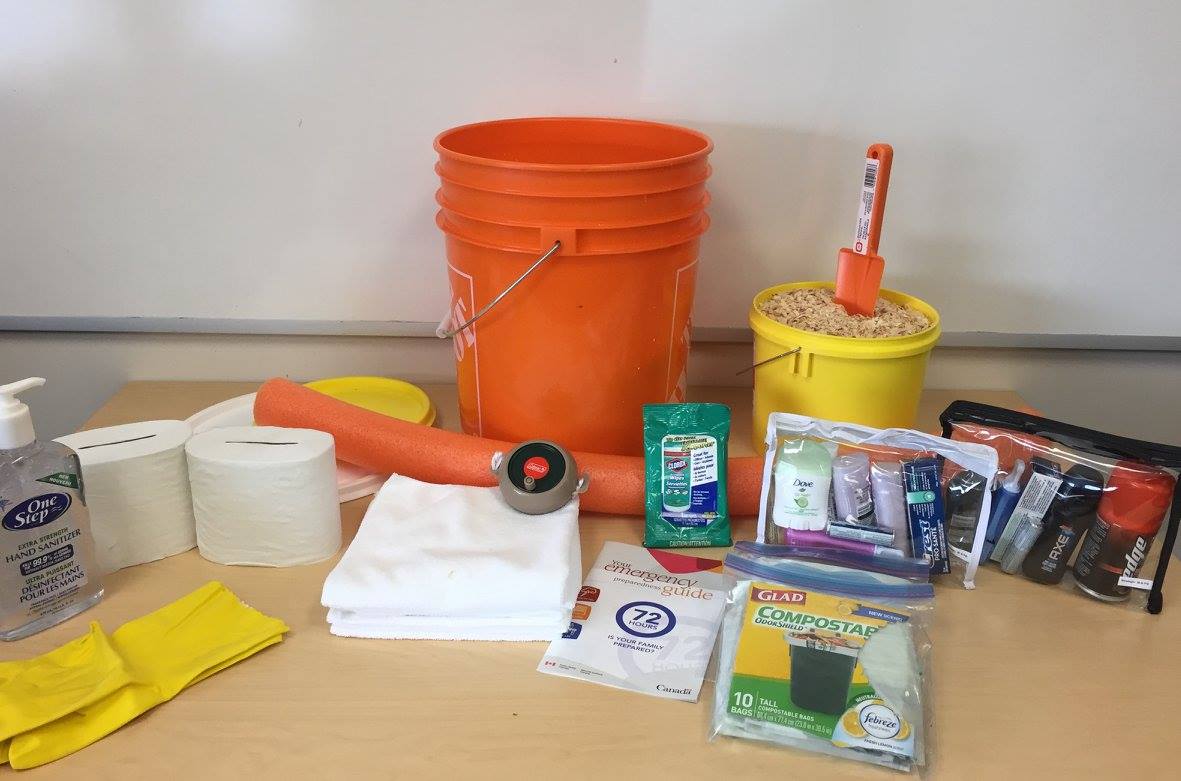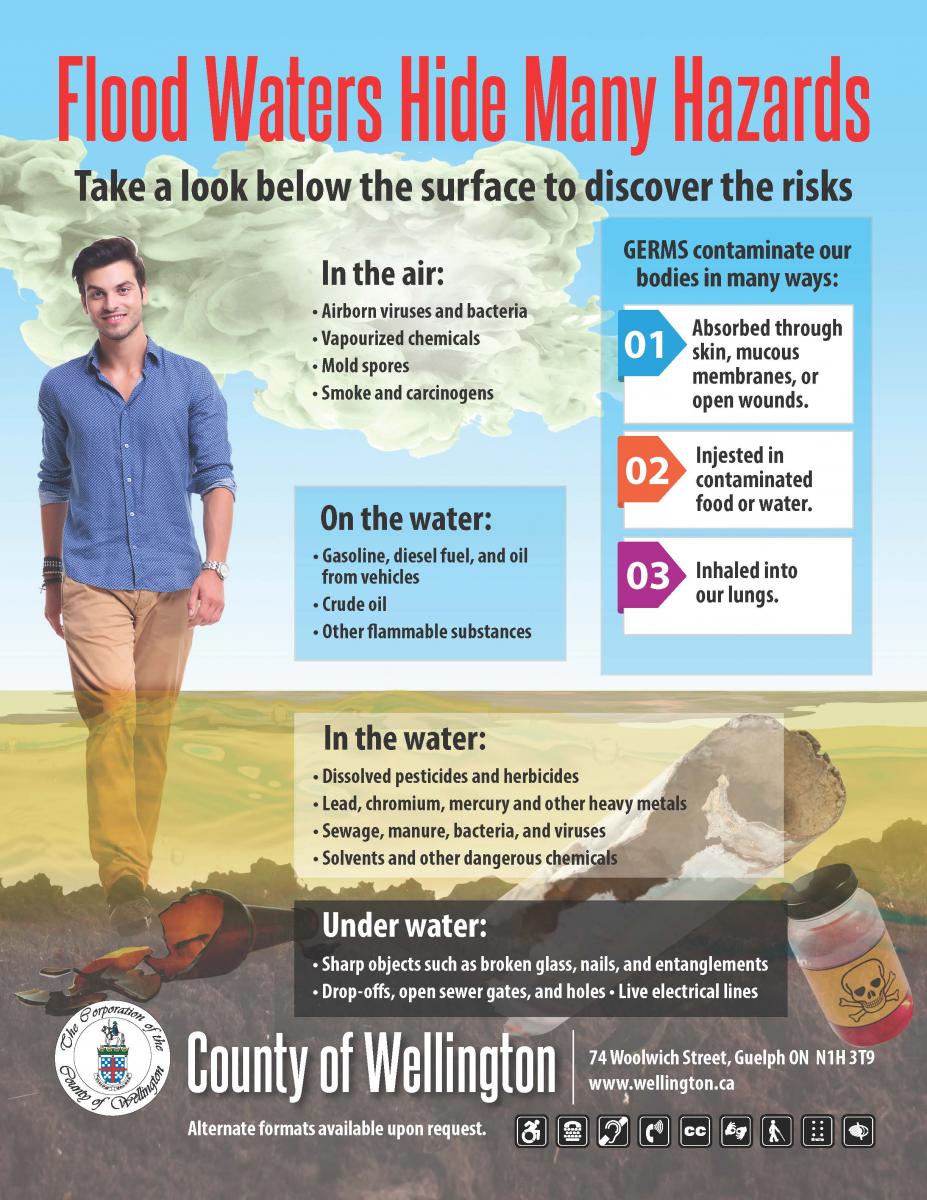When you think of emergencies or natural disasters, what comes to mind?
Maybe spectacular and errant tornadoes? House fires? Winter storms?
We are at risk for all these scenarios in south/central Ontario, but the number one threat to property and people is actually flooding. And that threat is only getting more serious with rainfalls becoming more frequent, stronger and longer due to climate change.
How often does flooding happen?
“Every year”, according to Steve Murphy, emergency management coordinator for Dufferin County, who says flood damage accounts for more insurance payouts than fires.
The most likely causes? Ice jams on rivers, heavy rains while the ground is still frozen, and increased human impact on the natural landscape.
So, with the inevitable spring flooding around the corner, what can folks do to prepare?
Preparing for a flood
The first thing you should know is that, while we’re lucky to have conservation authorities to monitor rivers and streams, 911 to deal with emergencies and municipalities to look at big picture planning, individuals are responsible for ensuring they’re ready for a flood. “You are the first responder,” Murphy says.
And that means being prepared, because flooding has the potential to affect everyone. It means much more than power outages or impassible roadways. It could mean:
- Not being able to drink the water straight out of your tap
- Not being able to heat your home in the early spring when temperatures are still cold
- Carrying supplies up the stairs to your apartment because the elevators aren’t working (including buckets of water to flush the toilet)
- Possibly having to evacuate (leave) your home
A good place to start for guidance and planning is the Government of Canada’s Emergency Preparedness site, GetPrepared.gc.ca.
Personalize your plan
When it comes to planning, make sure you take your family’s needs into account. For example, do you or a family member take medications that could run out? Have special dietary needs or requirements? What is your plan for your pets?
It’s also important to talk to family members young and old about emergencies. Twice a year, check your emergency supplies and re-orient your children and other family members to equipment (like water filtration systems or alternative cooking appliances).
Murphy recommends having the supplies you need for a three- to five-day emergency, but notes that ideally, you’d be able to get your family through a month. Top considerations include non-perishable food, drinking water, and an alternative to indoor plumbing.

What would you add to this “Gotta Go” kit? (Photo courtesy of Steve Murphy, County of Dufferin)
Health issues can arise from flooding
When you think of flooding, you might not think of it as a health hazard. But according to Murphy, when it comes to the floodwater itself, “Flooding is an ‘F’ word – it’s filthy. Everything on the ground will go into the water. It’s a stew of all the things you wouldn’t want to walk barefoot in.”
On top of the acute health issues that can arise from having water contaminated with things like manure and fertilizer (think skin infections and gastrointestinal illness), there’s the additional hazard of the water disguising sharp or broken objects, uncovered maintenance holes, construction debris that could tangle around your feet, and live electrical lines.

After the short-term hazards from flooding are over, the clean-up could take months. For example, you might:
- Find mould on your furniture, carpets and in the walls
- Have to dispose of unsafe perishable foods that have been without freezing or refrigeration for too long
- Need to clean and disinfect surfaces to avoid the growth of bacteria, viruses and mould
- Need to test your well water for contamination
Homeowners can take extra precautions to protect their investment
Do you live in a flood plain? If you don’t know, now is the time to find out! Whether or not your property is prone to flooding, there are steps you can take to protect your home and its contents. Remember, these are preventative steps—don’t wait until flooding happens.
Home design and renovations
Consider potential flooding when you design or renovate your home. Basements are the likely part of your home to flood. Don’t store valuable keepsakes below ground and know that your furniture and carpets will be sacrificed in the event of a flood.
Insurance
Do you have flood insurance? Review your policy with your broker or contact the Insurance Bureau of Canada if you need help deciphering it.
Invest in back-up equipment
Could you fix a broken sump pump in the middle of the night? Maintain it with a battery back-up or buy a spare for under $100.
What to do next
Any step you take to prepare for emergencies will help during a flood.
- Talk to your local emergency management program to find out about specific local hazards, and to learn more.
- Create a plan.
- Have an emergency kit.
Visit WDGPublicHealth.ca/flooding for more information and for a list of local partners and resources to follow.
